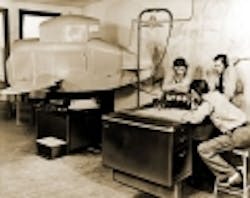Lockheed Martin wins $139 million contract for High Mobility Artillery Rocket System
DALLAS, 1 Feb. 2011. Lockheed Martin won a $139.6 million contract to provide 44 combat-proven High Mobility Artillery Rocket Systems (HIMARS) to the U.S. Army. This order will increase the Army's HIMARS launcher fleet to 375, with deliveries continuing through January 2013. Work on the contract will be performed at the company's facilities in Camden, Ark., and Grand Prairie, Texas.
"HIMARS brings soldiers an agile, responsive, and accurate delivery system of extremely precise fires," says Col. David J. Rice, U.S. Army program manager for Precision Fires, Rocket, and Missile Systems. "HIMARS continues to impress everybody with its performance and versatility, the system is reliable, robust, and exceptionally effective in theater."
The system can accommodate a six-pack of Guided MLRS rockets or one Army Tactical Missile System missile. HIMARS, a highly mobile artillery rocket system based on the Army's FMTV five-ton truck, is designed to launch the MLRS family of munitions.
"Half of the more than 1,900 Guided Multiple Launch Rocket System (MLRS) rockets expended by the U.S. Army and Marine Corps in Iraq and Afghanistan have been fired from HIMARS," says Scott Arnold, vice president for Precision Fires at Lockheed Martin Missiles and Fire Control. "HIMARS has proven itself to soldiers to be highly reliable and relevant in today's battlefield, and its operational readiness rate continues to exceed requirements, a testament to the quality of the system."
HIMARS is designed to enable troops to engage and defeat artillery, air defense concentrations, trucks, and light armor and personnel carriers, as well as support troop and supply concentrations. HIMARS can move away from the area at high speed following missile launch, before enemy forces are able to locate the launch site. The U.S. Army and Marines, in addition to several international allies, operate HIMARS.
Because of its C-130 transportability, HIMARS can be deployed into areas previously inaccessible to heavier launchers and provides a force multiplier to the modular brigade. The HIMARS fire control system, electronics, and communications units are interchangeable with the existing MLRS M270A1 launcher, and the crew and training are the same, says a representative.
